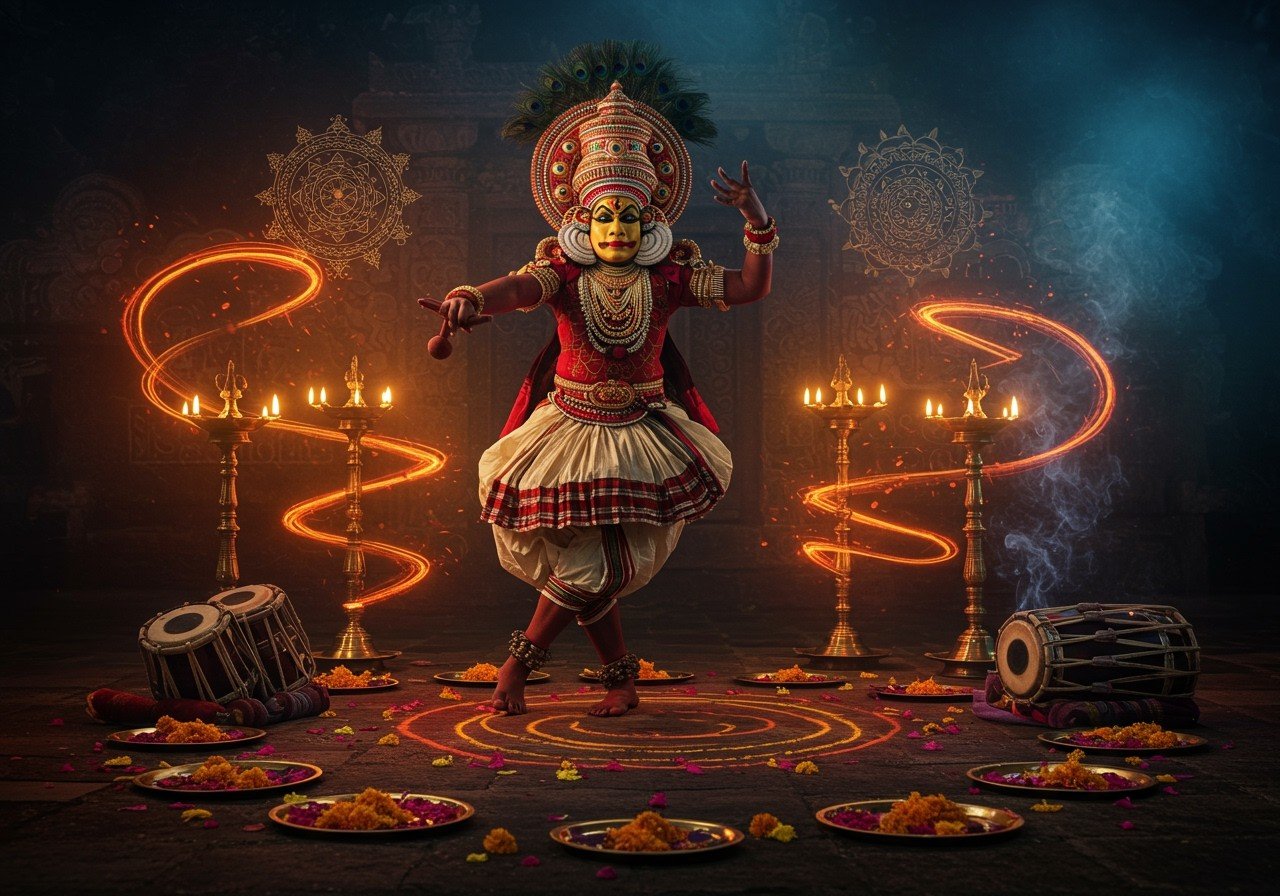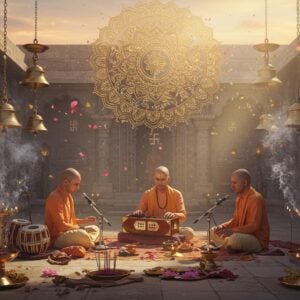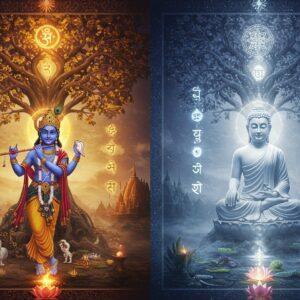
Kerala, a land steeped in rich traditions, is home to Mudiyett, a captivating ritualistic theatre form. This ancient art form weaves together mythology, vibrant performances, and deep cultural significance. Recognized by UNESCO, Mudiyett stands as a testament to India’s vibrant heritage. At poojn.in, we understand the profound significance of these traditions and offer a wide selection of puja kits and puja items to enhance your spiritual practices.
A Journey Through Time: History and Evolution
Mudiyett’s roots trace back to ancient Kerala, evolving over centuries through meticulous transmission across generations. The narrative draws from Hindu mythology, centering on the powerful Goddess Kali and the formidable demon Darika. Originating as a temple ritual, Mudiyett has blossomed into a vibrant community festival, adapting to modern times while preserving its traditional core.
Cultural Significance: A Tapestry of Beliefs and Values
Mudiyett is deeply woven into Kerala’s cultural fabric, fostering community bonds and safeguarding cultural identity. The elaborate costumes, expressive masks, and intricate makeup hold symbolic weight, conveying profound meanings. This art form serves as a powerful medium for religious expression and social commentary, mirroring societal values and beliefs. Mudiyett isn’t merely a performance; it’s a living embodiment of Kerala’s cultural heritage.
Rituals and Performance: A Symphony of Art and Devotion
Mudiyett unfolds through intricate rituals and structured performances, commencing with the invocation of deities and culminating in the dramatic clash between Kali and Darika. Performers showcase remarkable improvisation and storytelling skills. Music plays a vital role, with traditional instruments like the chenda and ilathalam enriching the theatrical experience. It’s a captivating spectacle of devotion and artistic expression.
UNESCO Recognition: Preserving a Timeless Legacy
Mudiyett’s global significance was affirmed in 2010 with its inclusion in the UNESCO Intangible Cultural Heritage list, significantly impacting its preservation and promotion. Local communities and cultural organizations actively strive to engage younger generations, ensuring the continuity of this cherished tradition. The delicate balance between preserving ancient practices and embracing modern influences remains a key focus. This recognition underscores the importance of safeguarding our intangible cultural heritage.
Interconnected Traditions: Kerala’s Ear Piercing Ceremony
Mudiyett resonates with other traditional ceremonies like Kerala’s ear-piercing ceremony, or Karnavedha (Sanskrit) / Kathu Kuthu (Malayalam). Both rituals are integral to community life and hold deep cultural and religious meaning. They serve as significant rites of passage, marking important milestones in a child’s life.
Names and Cultural Significance
- Karnavedha, from Sanskrit, combines “Karna” (ear) and “Vedha” (piercing), symbolizing the opening of the senses to knowledge and wisdom.
- Kathu Kuthu is the term used in Malayalam, reflecting the local language and its connection to the ceremony.
- In certain communities, it’s one of the sixteen Samskaras, crucial Hindu rites marking key life events. It signifies a child’s formal introduction into the rich tapestry of cultural heritage.
Timing and Rituals
- Families carefully select auspicious days based on astrological guidance for this sacred ceremony, often before a child’s first birthday. These days are often aligned with significant nakshatras like Revati or Ashwini, believed to bring good fortune.
- Traditionally, a skilled goldsmith performed the piercing with a gold needle, reflecting the cultural importance of gold. However, contemporary practices incorporate surgeons or specialized home services.
- The ceremony begins with a puja offered to deities, invoking blessings upon the child. The child traditionally sits on the lap of a parent or maternal uncle, enveloped in the love and support of family. A priest chants protective mantras, creating a sacred atmosphere. Gold earrings, often the first adornment, are believed to have healing properties.
For auspicious occasions like Karnavedha, ensure you have the finest kumkum and haldi.
Symbolism and Beliefs
- Symbolically, the piercing varies: the right ear for boys (representing the Sun and masculinity) and the left for girls (representing the Moon and femininity). This differentiation reflects the balance of energies and the distinct roles within the cosmos.
- Gold earrings are believed to balance energies within the body, promoting harmony and well-being. Silver earrings, on the other hand, are thought to help regulate excessive energy flow, bringing a sense of calm and stability.
- The ceremony is believed to open the inner ear to receive sacred sounds and vibrations, thereby improving focus, enhancing spiritual receptivity, and facilitating spiritual growth.
Health and Spiritual Benefits
- Traditional beliefs associate Karnavedha with various benefits: physical, emotional, and psychological well-being. These are passed down through generations and hold deep significance within the community.
- Some believe it regulates a girl’s biological cycle, preventing hysteria and other ailments. It’s also thought to aid in developing the child’s thinking capacity, fostering intelligence and mental acuity.
- The earlobe is seen as an acupuncture point related to vision, hence the piercing is believed to enhance eyesight and overall sensory perception.
Poojn.in: Supporting Your Ritual Needs
Poojn.in offers a wide array of essential puja items, including traditional clay pots (Matir Ghot), perfect for Mudiyett ceremonies and other sacred rituals. These eco-friendly clay vessels preserve the purity of traditions while being environmentally sustainable. Contact us at 03369029784 or WhatsApp us at 9476142738. Explore our complete collection today.
Embracing Tradition in the Modern World
Mudiyett and Karnavedha stand as pillars of Kerala’s rich cultural heritage, representing the enduring bond between tradition and community. These rituals safeguard cultural identity, weaving together spiritual and cultural threads that unite generations. As families continue to uphold these customs, they create a bridge between the past and the present.
FAQs on Mudiyett
What is Mudiyett? Mudiyett is a traditional ritualistic dance-drama from Kerala, narrating the mythological battle between Goddess Kali and the demon Darika.
Why is Mudiyett culturally significant? Performed in Bhadrakali temples, it preserves ancient stories and connects the community with its traditions.
When is Mudiyett performed? Typically between February and May, coinciding with summer festivals in Kerala’s Bhadrakali temples.
Which year did UNESCO recognize Mudiyett? In 2010, recognizing its cultural importance and aiding preservation efforts.
What are the key elements of a Mudiyett performance? Vibrant costumes, rhythmic music, expressive dance, and detailed facial expressions and gestures.
Who are the performers in Mudiyett? Usually from communities traditionally linked with the art form, with training passed down through generations.
Is Mudiyett performed outside Kerala? Primarily in Kerala, but occasionally at cultural festivals elsewhere.
How can one experience Mudiyett today? Visit Kerala during the festival season, attend performances in Bhadrakali temples, or check for cultural events featuring Mudiyett. You can also explore online resources to learn more about this fascinating art form.
For more information on Kerala’s rich cultural traditions, visit our blogs on Kerala’s Sacred Foods and the Guruvayur Temple.


